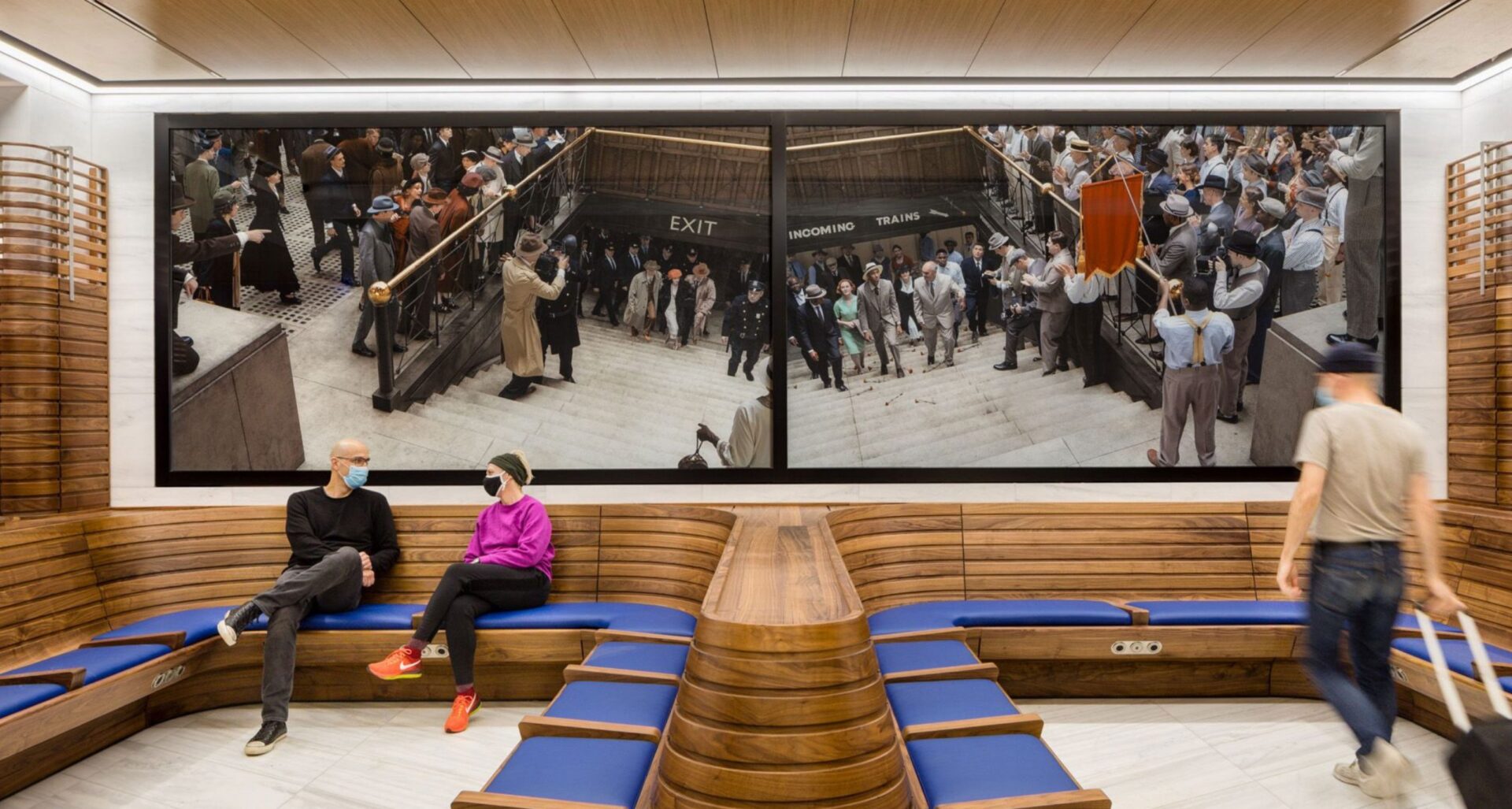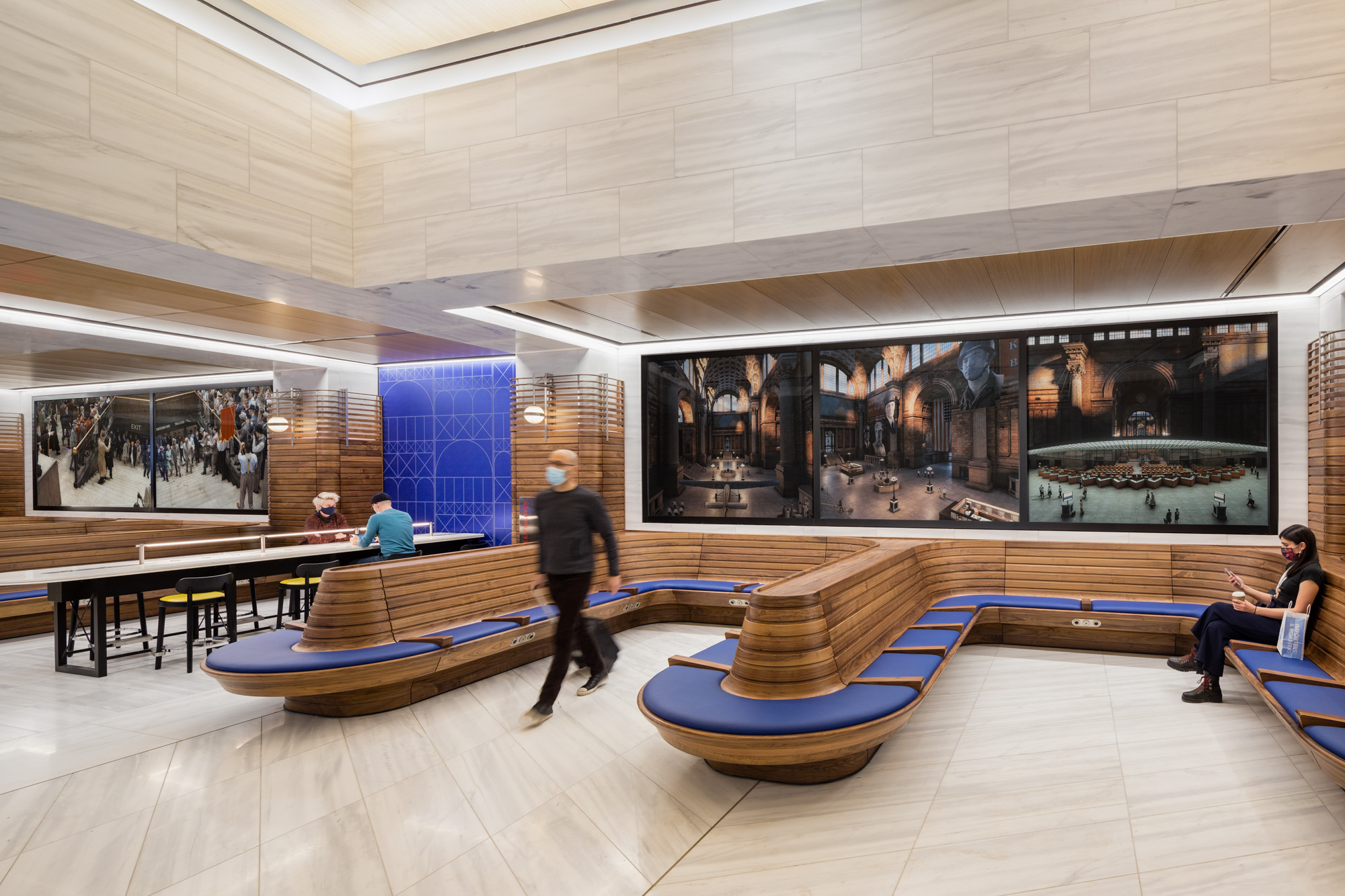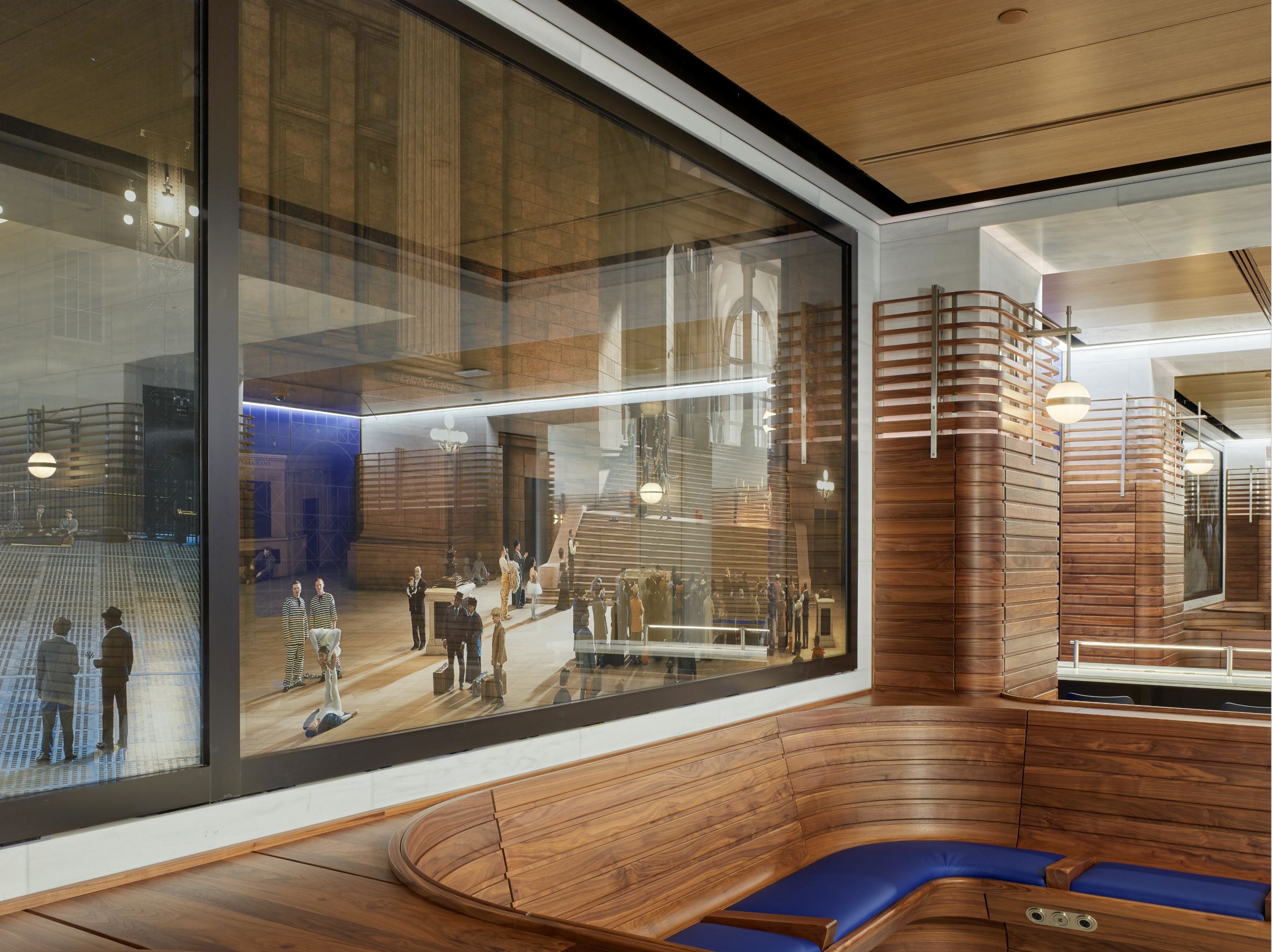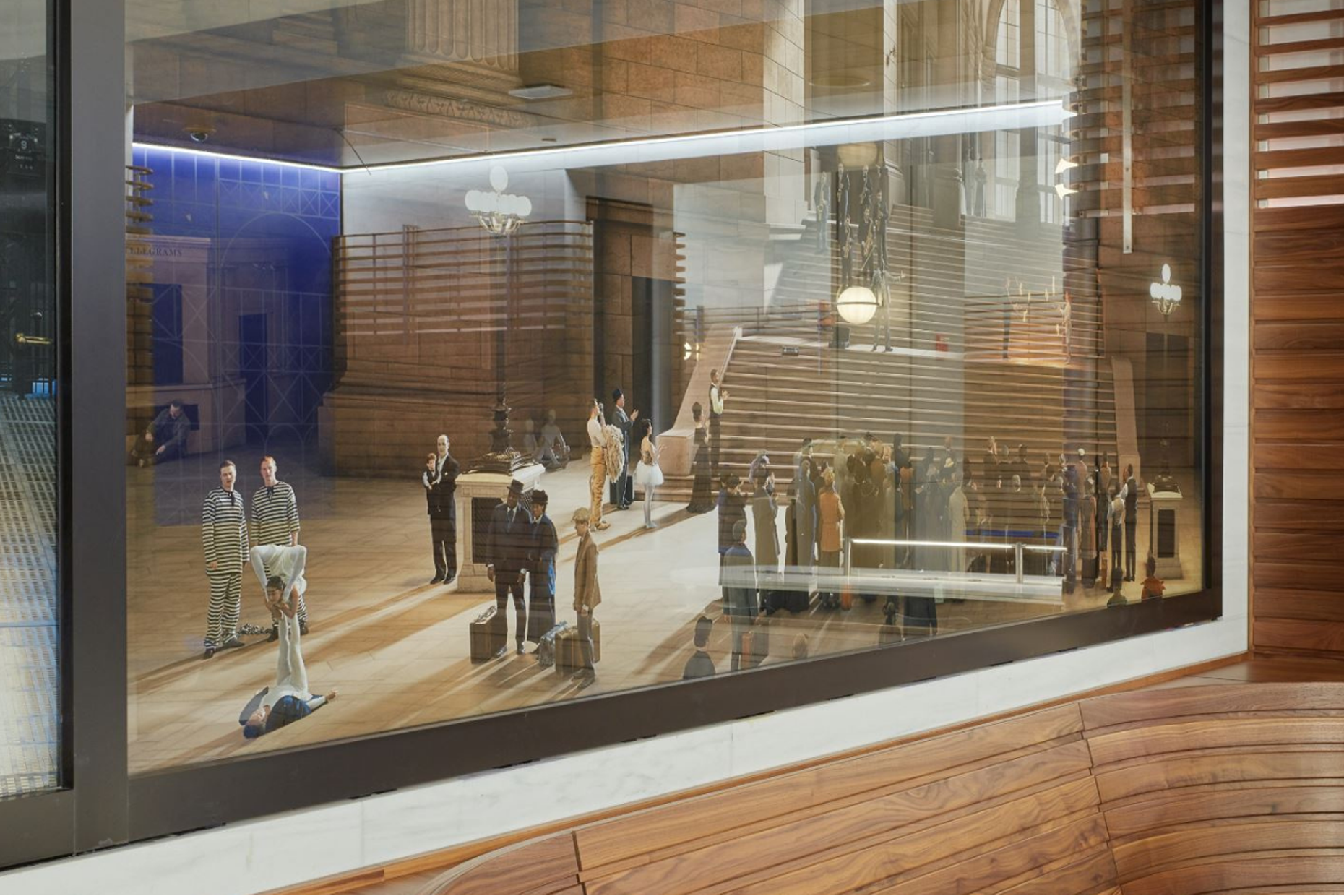





Client: Stan Douglas, Artist, commissioned by Empire State Development & Public Art Fund
Location: New York, NY, United States
Completion date: 2021
Project Team
Artist
Stan Douglas
Project Lead Manager
Muhammad Arif
General Glass International (GGI)
Architect
Skidmore, Owings & Merrill (SOM)
Overview
“Penn Station’s Half Century” public art display inside Moynihan Train Hall is the largest public art display to date for world renowned artist—Stan Douglas. Douglas worked closely with GGI to bring these historical reenactments to life across nine oversized glass panels, installed in four niches: each niche 6′- 7 5/8” H x 22′ -2 ½” W x ½” D. The Alice® direct-to-glass printing process captured the large format photography on 12mm low-iron tempered glass with ceramic frit paint that is UV, fade, and scratch resistant to stand the test of time needed for this historic landmark.
Goals
In a full juxtaposition from the current Penn Station’s drab environment, Moynihan Train Hall is filled with both light and site-specific artwork produced by some of the world’s most renowned artists. Commissioned by Empire State Development and in partnership with Public Art Fund, the selection of artwork includes pieces by Stan Douglas, with his series, “Penn Station’s Half Century,” as an homage to the original Penn Station. This impressive series spans more than 80-feet of [glass] wall and complements a waiting area for ticketed passengers. To build this masterpiece, Douglas drew upon archival research to capture nine small but significant moments that occurred within Penn Station, from an impromptu vaudeville show directed by Burt Williams in 1914 to the emotional goodbyes of a soldier leaving his family for the front lines during World War II. Each moment was recreated and staged with models adorned in period costuming. Due to the COVID-19 pandemic, each model was photographed separately—including those who appear in portrayals of large crowds—and they remained masked until the second it was time to snap the picture. The images were then layered upon one another to great effect against a backdrop of digitally reconstructed interiors of the former station.
Process
As Douglas’s largest piece of public art installed to date and his first permanent display, finding a glass fabricator with the ability to reproduce the quality required and in large format was key, along with the need for a durable solution to stand the test of time. GGI’s Alice® direct-to-glass printing process was able to meet these challenges. The images were recreated via a durable ceramic frit paint, which was digitally jetted onto the surface of OptiWhite™ glass—an extra-clear, low-iron float glass, making it perfect for applications where both transparency and color purity are the desired outcome. The full artwork display is spread across nine oversized glass panels, installed in four niches: each niche 6˙ - 7 5/8ˆ H x 22˙ -2 1/2ˆ W x 1/2ˆ D.
Additional Information
The Moynihan Train Hall comes with a revival of classic architecture alongside a helping of modern art, which General Glass International (GGI) brought to life with their Alice® direct-to-glass printing process. Initially spearheaded in the early 1990s by Senator Daniel Patrick Moynihan, for whom it is named, Moynihan Train Hall serves both as an extension of Penn Station’s concourse and a callback to the structure and style of the original Penn Station, which was dismantled in 1963 and replaced five years later with the oft-maligned underground station that has served the city ever since. The 255,000 square foot train hall is located in the Farley Building, which, in 1912, was designed to be the architectural companion to Penn Station and became known as the James A. Farley Post Office. The project itself embodies adaptive reuse, molding the building’s structure from its initial construct into something new—and in this case, something new with a heavy nod to the train station the Farley Building was initially designed to mirror.